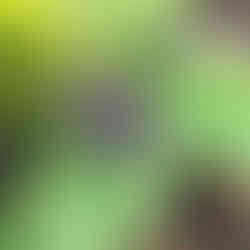DC, Maryland and Virginia Native Plants: Behold the Bluebell!
- Nuts for Natives
- Apr 14, 2021
- 3 min read
Updated: Apr 14, 2021
The flower of native Chesapeake spring in the piedmont.

I live on a corner across from a City park and have all sorts of fun talking to all sorts of people passing by when I am outside gardening. Without a doubt, the plant I get asked most about is Virginia bluebell (Mertensia Virginica). Even in a small garden, they get noticed. Some say the flowers remind them of their childhood where they were so abundant; others want to know where to get them. A few people enthusiastically share sightings of fields of bluebells. This post is all about the bluebell!
The plants initially emerge with purple foliage which turns to a minty green with purple buds. As they grow, the foliage turns to a lush, bright green and blue flowers unfurl. As the flowers mature, they turn a lavender blue with touches of pink. The blooms typically last at least several weeks and often longer. They are a foot to two feet tall and wide.
The Virginia bluebell is a native wildflower that is ephemeral. It emerges in early spring and after blooming, the flowers literally seem to fade back into the ground. You may be familiar with daffodils and tulips whose foliage must remain long after the flower has gone to feed the bulb for future blooms. Virginia bluebells are not like that. As soon as the flowers finish blooming, the bluebell foliage gently turns yellow, lays down and sort of melts back into the soil. Before you know it they are gone, not to be seen again until the following spring.
Bluebells do best as understory plants, beneath shrubs and trees which afford bright sun in early spring before trees leaf out and then shade after those trees and shrubs leaf out. They grow in average to moist soils. They are typically planted among other later emerging plants such as ferns and other perennials. Bluebells spread through rhizomes and self seeding.

I planted these 6 years ago. The bluebells and native celandine poppies (Stylophorum diphyllum) emerge in early spring. Christmas ferns (Polystichum acrostichoides) and coneflowers (Echinacea purpurea) begin to grow as the bluebells fade.

These bluebells were planted as plugs two years ago among native Allegheny pachysandra (Pachysandra procumbens) which is just emerging. If you are planting bluebells in an area where you plan to add more plants later, it is helpful to put a marker where you planted the bluebells. Although you think you will remember where they are, when you return and there is no plant to be seen, it can be a challenge. A popsicle stick works well.
A neighbor down the street planted bluebells among yellow daffodils and pink and orange tulips. It's stunning. You can tuck them in anywhere where there is at least partial summer shade and soils that are not bone dry.
Virginia bluebells are sold as bare roots, plugs and potted perennials. They can be a bit more difficult to find and it is easiest to find them now when they are in foliage. As of April 14th, the following nurseries from "Where to Buy" have them in stock. Other nurseries listed carry them but are temporarily out of stock.
Merrifield Garden Center (not in stock; expecting a shipment week of April 19)
Valley View Farms (not in stock; may receive a shipment week of April 19)
Prairie Moon Nursery (bare root plants and seeds)
Prairie Nursery (bare root plants)
If you purchase bare root plants now, you should plant them right away. They may or may not emerge. If they don't, you should see them next spring. Bare root plants are typically a bit less expensive and a bit easier to find.

A carpet of Virginia bluebells in spring is a sight to behold!


















